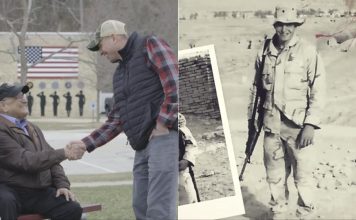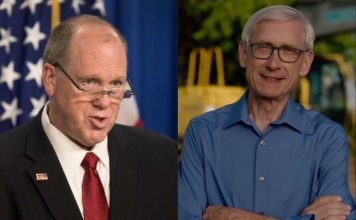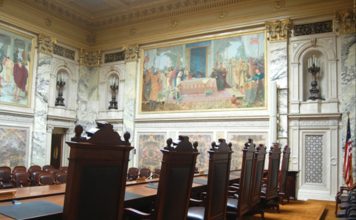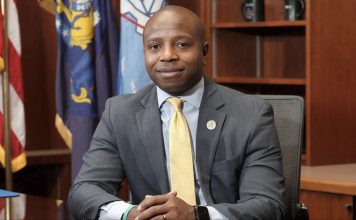Voluminous public records – including investigative reports from Special Counsel Robert Mueller, Congress and the Justice Department’s inspector general – have established that Trump and his associates were targeted with a baseless Russian collusion allegation. The fraudulent claim originated with the Hillary Clinton campaign, was fueled by a torrent of false or deceptive intelligence leaks, and was improperly investigated by the FBI, potentially to the point of being criminal. Despite these disclosures, key questions remain about the origins and the spread of the conspiracy theory.
President Trump’s last days in office offer a final opportunity to declassify critical information on the Russia investigation that engulfed his lone term.
The FBI says it opened its Trump-Russia investigation on July 31, 2016 after learning of a potential offer of Russian assistance to junior Trump campaign volunteer George Papadopoulos. It later emerged that the offer came from a Maltese academic named Joseph Mifsud, whom U.S. officials have suggested was acting as a Russian cutout.
A highly placed Kremlin mole was the main source of the core claim in CIA Director John Brennan’s hastily produced 2017 “Intelligence Community Assessment” (ICA) that Russian President Vladimir Putin intervened in the 2016 election to help defeat Clinton and support Trump.
Why didn’t the FBI grill Mifsud about his sources, methods and contacts? What other efforts, if any, were made to surveil him?
Multiple outlets have already outed the mole, Oleg Smolenkov, and the circumstances of his exit from Russia in June 2017. This supposed betrayer of the Kremlin’s secrets was found to be living under his own name in a Virginia suburb.
The ICA’s claim was widely portrayed as the consensus view of U.S. spy agencies, but in reality it was the conclusion drawn by a small group of CIA analysts, closely managed by then-Director Brennan. Paul Sperry of RealClearInvestigations revealed that Brennan overruled two senior analysts who disagreed with it.
Yet the FBI did extensively rely on the Steele dossier, most egregiously to obtain a surveillance warrant on Trump campaign volunteer Carter Page.
After the FBI’s collusion probe got underway in July 2016, it purportedly did not rely on the Steele dossier, a series of opposition-research memos prepared by former British intelligence officer Christopher Steele. In his testimony to Congress in July 2019, Mueller claimed that the dossier was “outside my purview.”
In June 2016, CrowdStrike, a private company, accused Russian government hackers of infiltrating the Democratic National Committee’s servers. This assessment was presented as direct evidence of Russian interference in the presidential election and was later endorsed by the FBI and Mueller’s team.
There may be more evidence, as suggested in recently declassified documents, that the Steele material played a bigger role in the Mueller investigation than previously known. Further declassification could shed additional light on whether Mueller’s disavowal of Steele aligns with the conduct of his investigators.
The Crowdstrike reports would indicate whether the FBI and Mueller’s team were on solid ground in asserting Russia hacked the DNC and stole its emails.
CrowdStrike’s highly consequential allegation has been contradicted by subsequent disclosures. Like Steele, CrowdStrike was a Democratic Party contractor whose version of events dovetailed with the Clinton’s campaign’s apparent desire to muddy Trump with Russia connections. In a stunning admission, U.S. prosecutors told a court in June 2019 that CrowdStrike had submitted reports of a forensic analysis of its servers to the government in draft, redacted form.
The January 2017 ICA assessed “with high confidence” that a Russian intelligence agency, the GRU, “used the Guccifer 2.0 persona” to release the stolen DNC files. In its July 2018 indictment of GRU officers, the Mueller team also strongly suggested that Guccifer transferred the stolen DNC emails to WikiLeaks.
Given the importance of the hacking allegation, and if its evidence is non-classified, why shouldn’t Trump direct the U.S. intelligence community to release all of it?
The Russia investigation remains a bitterly partisan issue, but it’s worth remembering that in November 2016, Clinton campaign chair John Podesta called on the U.S. government to “declassify information around Russia’s roles in the election and to make this data available to the public.” His purposes were different, of course. Nonetheless, disclosing such information now would give Americans a fair understanding of an unprecedented investigation into a sitting president – as well as the conduct of the intelligence officials who it carried out.
The special counsel’s final report, issued in March 2019, quietly acknowledged that it “cannot rule out that stolen documents were transferred to WikiLeaks through intermediaries” – an admission that it has no hard evidence that Guccifer 2.0 was WikiLeaks’ source. It does not identify who those intermediaries might have been. Also missing from Mueller’s account is the evidence used to identify Guccifer 2.0 as a Russian intelligence front.
Aaron Maté / RealClearInvestigations
Go to Source
Reposted with permission
Table of Contents


































